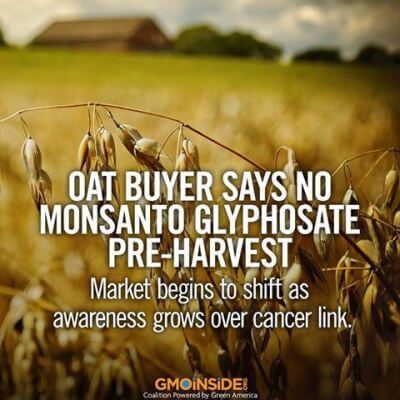 Joseph P Farrell – You may be wondering what’s been happening to I.G. Farbensanto lately. It’s been a while since we’ve heard from, or about, them, so it may be worthwhile to newer readers to apprise them of whom we’re talking about. I.G. Farbensanto is our nickname for Big Agribusiness, and we used to call it Mon(ster)santo, until the big German chemical firm Bayer – a former component of I.G. Farben, the notorious German chemicals cartel that included not only Bayer, but BASR (also a still existing company, Badische Anilin und Soda-Fabrik) and some other companies – Bayer bought Monsanto (and Monsanto’s legal problems) a few years ago.
Joseph P Farrell – You may be wondering what’s been happening to I.G. Farbensanto lately. It’s been a while since we’ve heard from, or about, them, so it may be worthwhile to newer readers to apprise them of whom we’re talking about. I.G. Farbensanto is our nickname for Big Agribusiness, and we used to call it Mon(ster)santo, until the big German chemical firm Bayer – a former component of I.G. Farben, the notorious German chemicals cartel that included not only Bayer, but BASR (also a still existing company, Badische Anilin und Soda-Fabrik) and some other companies – Bayer bought Monsanto (and Monsanto’s legal problems) a few years ago.
Accordingly, we changed our nickname for Big Agribusiness to IG Farbensanto. Our other reason for the monikers was the dubious history of Big Agribusiness and its practices regarding GMOs, which I assume most readers here are familiar with. Continue reading

 Arjun Walia – It’s hard to imagine how any jury could not come to the conclusion that Roundup herbicide causes cancer.
Arjun Walia – It’s hard to imagine how any jury could not come to the conclusion that Roundup herbicide causes cancer.
 Paul Fassa
Paul Fassa “In an April 20 memo to Prairie oat growers, Grain Millers said the new policy was ‘driven by functional performance attributes of finished products manufactured from oats known to have been treated with glyphosate and by customer demand.’ [1]
“In an April 20 memo to Prairie oat growers, Grain Millers said the new policy was ‘driven by functional performance attributes of finished products manufactured from oats known to have been treated with glyphosate and by customer demand.’ [1]